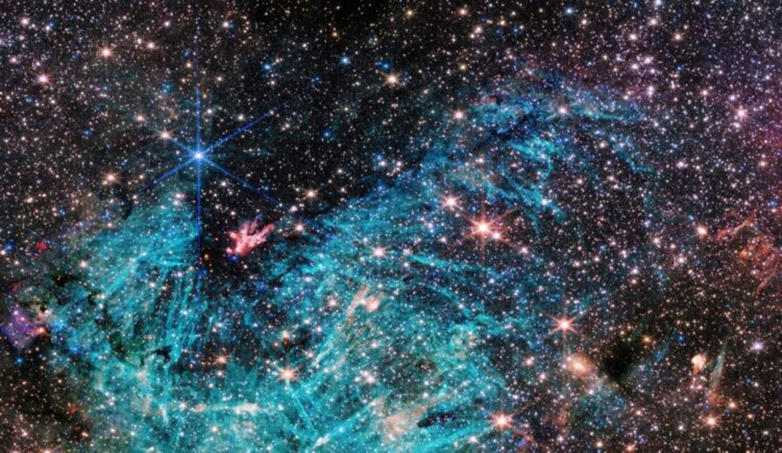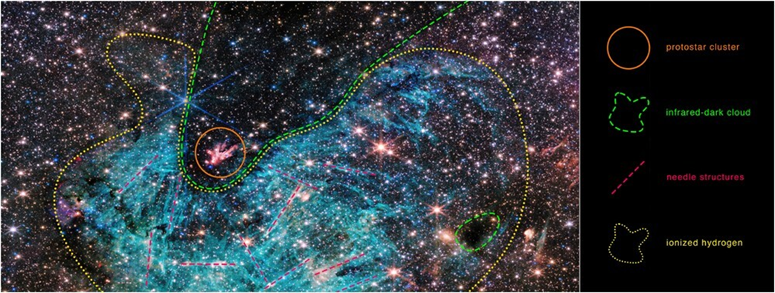James Webb dives into the heart of the Milky Way

Photo credit: The NIRCam (Near-Infrared Camera) instrument on NASA's James Webb Space Telescope reveals part of the dense core of the Milky Way.
NASA's space telescope reveals part of the center of our galaxy where the proto-star cluster Sagittarius C is located. Data whose study will be rich in information on star formation.
The image before us contains 500,000 stars. Thanks to the exceptional acuity of its infrared instruments, the James Webb telescope has imaged a portion of the center of the Milky Way with an unprecedented level of detail. This is the region where the protostar cluster Sagittarius C (Sgr C) is located, which is located about 300 light years from the central supermassive black hole of our galaxy, Sagittarius A*.
This nursery is home to a proto-star whose mass is 30 times that of the Sun, underline ESA and NASA.
“So we're seeing a lot of features for the first time,” said Samuel Crowe, lead researcher on the observation team and an undergraduate student at the University of Virginia in Charlottesville. “Webb reveals an incredible amount of detail, allowing us to study star formation in this type of environment in a way that was not possible before. »

This captioned image details the different elements highlighted by James Webb: the cluster of protostars (protostar cluster), the cloud from which the protostars emerge (infrared dark cloud), the needle-shaped structures ( needle structures) and ionized hydrogen.
The center of the Milky Way is dense and tumultuous
Studying James Webb's data will provide valuable information on star formation and how this process can depend on the environment.
Researchers are particularly interested in the vast cyan-colored zone which represents emissions of ionized hydrogen from proto-stars. Its extent intrigues scientists, as do the needle-shaped structures that dot it.
“Webb’s image is astonishing, and the science we will get from it is even better,” enthuses Samuel Crowe. “Massive stars are factories that produce heavy elements in their nuclear cores. Better understanding them therefore means knowing the history of the origin of a large part of the universe. »
Source: websites

